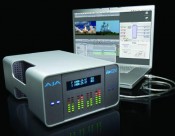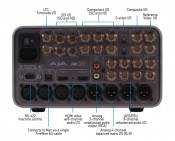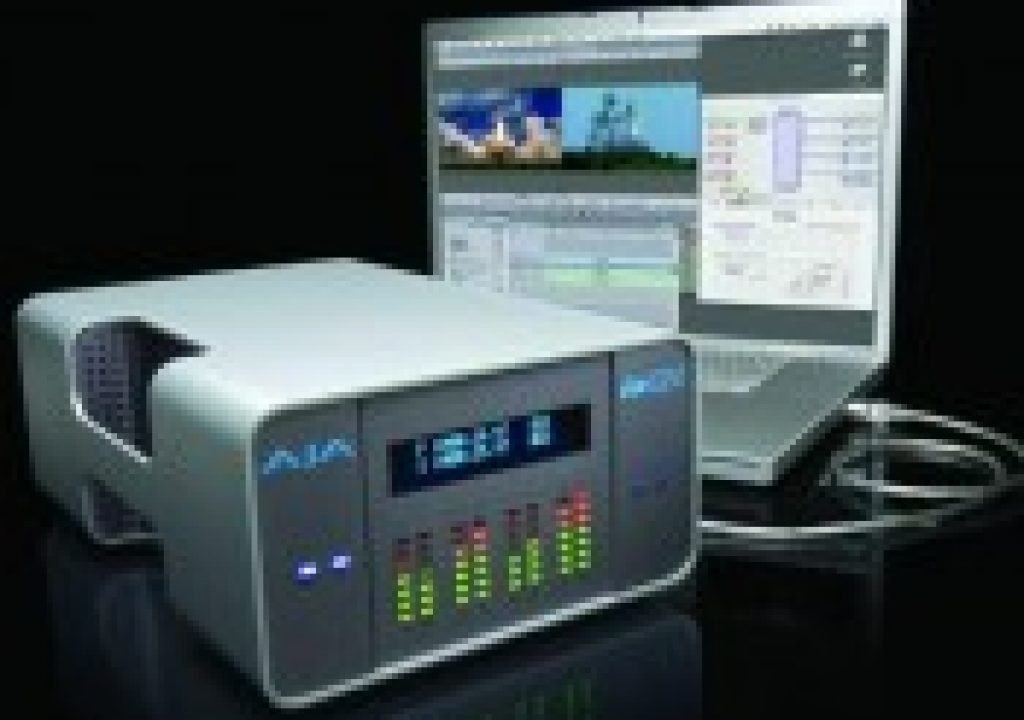
In late February 2008, FreshDV conducted a series of HD camera tests in Chicago. Cameras tested included the Panasonic Varicam, Panasonic HPX-3000, Panasonic HVX-200, Sony F900, Sony XDCAM PDW-350, Sony XDCAM PMW-EX1, Red One, and an Arri film camera for a baseline comparison to 35mm. In addition to shooting test charts and noting comparative data on each camera, one of the major goals of the test was to create a comparative, controlled real-world studio shooting situation that would stress each camcorder and show the unique strengths and weaknesses of each system’s codec, lens, and imager. To that end, each camcorder was to shoot the test charts and scenes in both it’s native recording format and codec, with an uncompressed reference capture for comparison. This obviously created an interesting problem, as the number of formats, resolutions, framerates, and output features for each camera varied widely. So we knew that capture and image monitoring was going to be an issue to be addressed well in advance.
After speaking with HD guru Mike Curtis, we opted to use Apple’s new 10-bit ProRes 422 HQ codec as our “uncompressed” baseline master. While ProRes IS technically a lossy codec, it is widely noted that the quality loss is trivial and virtually imperceptible from Uncompressed captures. And the the disk speed requirements for ProRes are far less stringent. This solved a lot of problems on the capture side of this test. The one remaining wild card, connectivity, was solved when we contacted AJA and they provided us with an IoHD “do everything” box. The IoHD is a sleek 7 lb aluminum box that offers a host of input and output options, can transcode virtually anything to ProRes 422 in realtime, and does it all via a single Firewire 800 cable. Announced at last year’s NAB Show, it has been shipping since fall of 2007.
The back of the IoHD offers a plethora of connectivity options; HDMI, Component, S-Video, SDI, XLR audio, AES audio, external sync, linear time, and RS-422 deck control. With the exception of a power switch, there are no physical controls on the box itself…everything is routed and controlled via the IoHD software control panel. This control panel is surprisingly intuitive, and allows full control over routing of where a signal goes in the box. For instance, we would take a Component input from the HVX, for example, and reroute that back out to the Panasonic broadcast monitor for calibration, focus and monitoring.

Setup was relatively trivial. It requires installing the IoHD control panel software and then connecting the IoHD to our computer (a MacBook Pro in our case) via Firewire 800. As the MacBook Pro only offers a single Firewire 800 connection, and the IoHD requires the entire bus (no, you can’t get around this), we opted to use an external eSata hard drive for ProRes captures, which was connected via an eSata ExpressCard adapter. The only issue we ran into on setup was the fact that the IoHD must be connected to the computer and powered on before booting the computer. This means that if you disconnect the Io box for any reason, you must reboot to pick it back up. We also had some problems with our eSata drive going into a sleep mode and not rewaking properly, and necessitaing a reboot before FCP would see it again. This may have been due in part to our particular eSata adapter card. This didn’t pose too much of a problem, we quickly figured out that manually accessing the drive every 10 minutes or so would keep it from sleeping. It would have been nice to have a utility like Martin Baker’s DiskSomnia (www.freshdv.com/go/disksleep/) to avoid this issue. I should stress that this issue seemed to be drive/adapter related and did not appear to be the fault of the IoHD unit.
The workflow was essentially this; connect the HD-SDI or Component input to the IoHD, route the signal back out to the production monitor. At the same time, the IoHD was converting the signal to ProRes 422 HQ in realtime, which we captured over the Firewire 800 using Final Cut Pro to a commodity eSata hard drive connected to a MacBook Pro laptop. Think about that for a second…any input could be rerouted out for monitoring, while at the same time capturing a virtually lossless HD video stream to a $200 hard drive attached to a typical laptop computer. No fancy high-speed RAID, no crazy hoops to jump through. When the IoHD software is installed, it creates a number of custom capture presets in FCP, so setting up each capture is trivial. When you can simply pick a preset out of the list labeled “Varicam,” it takes a lot of the thinking out of the equation.
In conclusion, the system worked beautifully, and enabled us to move very quickly with our tests. The unit ran quiet and cool, and we completed our two days of testing on time. Having a ProRes 422 master really allowed us to dig into where each camera and system fell apart…determining if the breaking point came from the codec or the camera system itself. It also solved our monitoring connectivity issues with ease. To that end, the IoHD was an invaluable tool on set that made it’s $3500 price tag seem trivial. While it is a system with a specific strength and focus, it delivers in that area with near perfection.
Positives: Relatively compact and very quiet. Can handle virtually any SD or HD input signal. Transcodes to both ProRes 422 flavors in realtime. Can up and downres on the fly. Outputs for monitoring in virtually any flavor and format.
Negatives: No Firewire in (which would be useful for ingest of HDV or DV directly to ProRes in realtime). Takes up the whole FW800 bus. Must be connected prior to booting the computer. Is limited to 4:2:2 and offers no LUT options. Isn’t exactly cheap at nearly $3500.
Summary: An invaluable asset for editors and on-set capture that excels in specific situations.
Thanks to the following companies for their assistance and support in this testing effory: Zacuto, Fletcher Chicago, Lakeview Productions, Schumacher Camera, Abel Cine NY, and Midtown Video. The fully-furnished apartment and kitchen set was provided by Resolution Digital Studios at their beautiful Chicago location. They were a tremendous asset in accomplishing this test.
The following is a short behind the scenes video clip that shows the workflow in action on-set.

Filmtools
Filmmakers go-to destination for pre-production, production & post production equipment!
Shop Now













